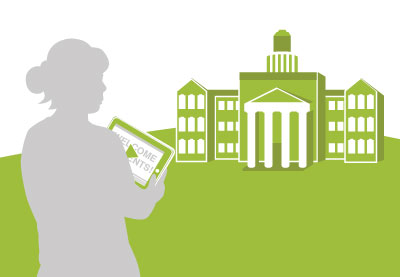 The days of mobility being thought of as simply making calls on a cellphone are over. Mobility has come to mean anywhere, anytime access to information and tools that are helping us all to live more productive lives. This has been solidified for consumers with the litany of B2C apps that are now available and is now transforming the B2B world as well. Industries once skeptical of the mobile shift have come to realize the benefits associated with approaching mobility as they would any other enterprise technology strategy. It is no longer possible to ignore the benefits of leveraging enterprise mobility platforms and delivering mobile applications that enhance core business functions.
The days of mobility being thought of as simply making calls on a cellphone are over. Mobility has come to mean anywhere, anytime access to information and tools that are helping us all to live more productive lives. This has been solidified for consumers with the litany of B2C apps that are now available and is now transforming the B2B world as well. Industries once skeptical of the mobile shift have come to realize the benefits associated with approaching mobility as they would any other enterprise technology strategy. It is no longer possible to ignore the benefits of leveraging enterprise mobility platforms and delivering mobile applications that enhance core business functions.
Industries such as financial services, pharmaceutical sales and media were quick to realize the mobile shift and are in the forefront of understanding how using enterprise apps can enhance the way the do business. A set of new industries finally warming up to mobility includes manufacturing, utilities, and higher education. The enterprise mobility threshold seems to be getting off its feet in less tech-savvy segments and this is a very good thing for mobile marketers.
A recent study done by Harvard Business Review and SAP indicated that with increasingly capable mobile technologies, 59% of mobile users utilize their smart phones predominantly because of mobile applications. Innovation in mobile equipment has hits it’s peak, but the potential for innovation on the app front is boundless in opportunity. Industries such as utility and manufacturing are seeing specific improvements around more rapid service performance, easier tracking of customer trends, operational efficiency through integration of GIS systems and mobility, and even improved environmental stewardship while workforces are in delicate environments out in the field. Though slow to jump on the bandwagon, utilities reported a 23% improvement in service-level agreements and 20% increase in overall productivity as of August 2012. With these metrics, it’s hard not to see the transformational opportunities to elevate processes and core functions with the use of mobile apps.
In terms of education, the shift toward mobile learning has been inherently slow given the historical challenge of appropriate funding. Many students own their own devices, and bridging the gap towards making those platforms more productive through education integration is the challenge most universities face when looking to improve technology standards.
Whether it’s online classes, tutorials, or e-learning efforts, it is certainly vital to make education as attractive as possible to young people, and mobility is undoubtedly a variable to cover when rolling out new educational strategies. David Metcalf, author and contributor to the Hindawi article, “ Will Mobile Learning Bring A Paradigm Shift In Higher Education?”, notes that it is the responsibility of educators and thought leaders to respond to their changing audience in students and adjust mobile learning capabilities accordingly. Finding a mobile solution that is able to integrate with existing systems ensures seamless integration into existing technology landscapes and allows for a more robust application
There is not question of the application of mobility for B2C strategies, but there is an entire B2B frontier that is still largely unexplored. These industries may be late to the party, but at least they showed up.


Comments are closed.